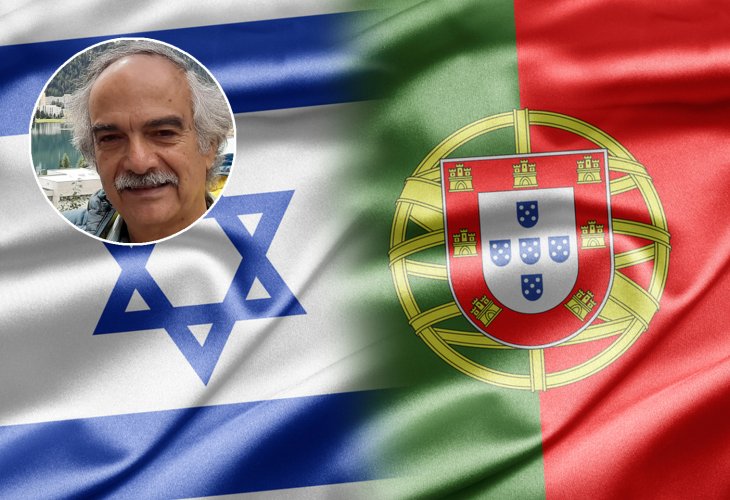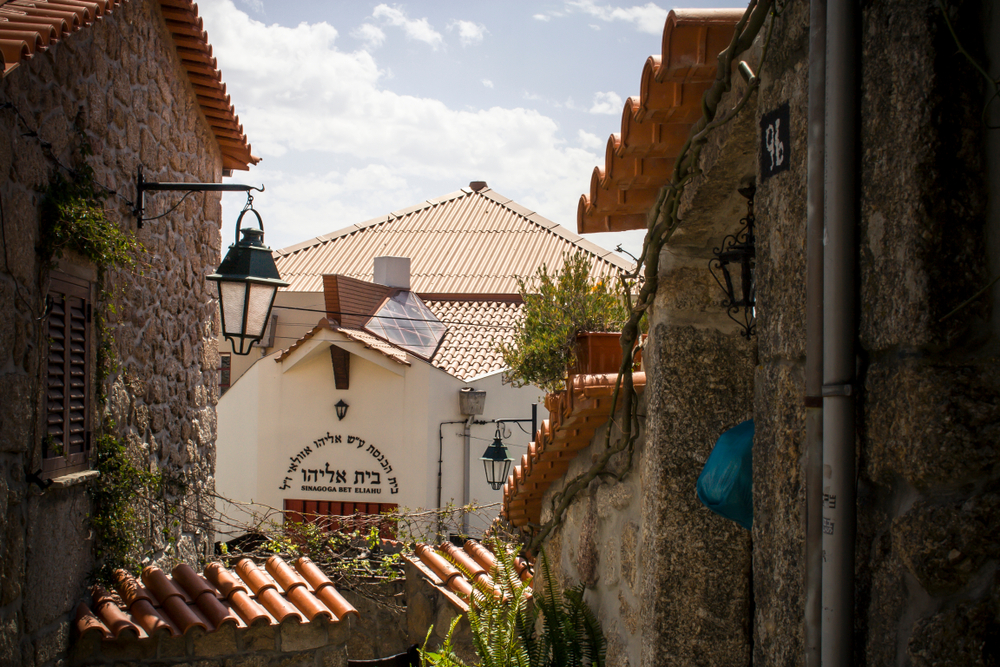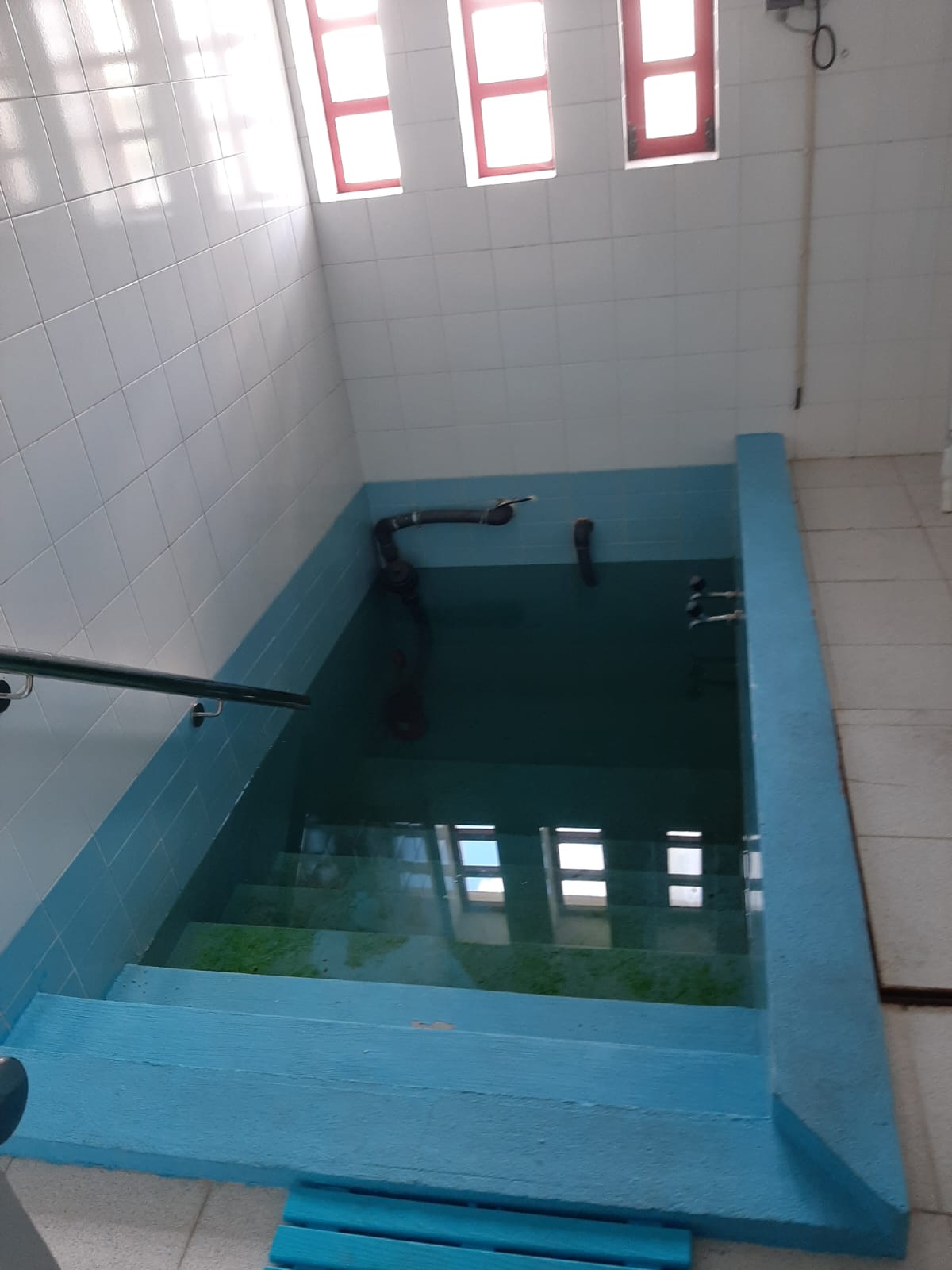The Hidden Jewish Heritage of Portugal: A Guide's Journey
After extensive travels worldwide, tour guide Aryeh Zaribi shares his experiences discovering Portugal's hidden Jewish heritage, including the emotional moment he learned of a 92-year-old woman's secret Jewish identity, and what transpired when a husband discovered his wife was Jewish.
 Inset: Aryeh Zaribi (Photo: Shutterstock)
Inset: Aryeh Zaribi (Photo: Shutterstock)The moment Aryeh Zaribi, a tour guide, discovered that the elderly Christian woman Teresa was actually Jewish was particularly moving for him. Equally profound was the instance when he uncovered a mikvah on the outskirts of a remote town after days of searching. Add to that the startling revelation by a Portuguese colleague finding out his Christian wife was descended from forced converts.
Zaribi weaves all these moments into one compelling narrative. For the past twenty years, he has led large tourist groups worldwide. However, his most memorable experiences occurred in Portugal, where he encountered descendants of conversos who were still afraid to reveal their Jewish identities. How did he finally persuade them to open up, and what happened when a husband learned unexpectedly about his wife's Judaism?
"I'm the last Jewish person in the city"
At the beginning of his adventurous journeys, Zaribi arrived in Portugal. In the heart of the country, north of the capital Lisbon, lies the quaint town of Tomar. This town is composed mostly of ancient streets, including Rua Joaquim Jacinto, home to the oldest synagogue in the country and one of the oldest in Europe. "The first time I arrived, I approached the mayor and asked for the synagogue key. He directed me to an elderly woman living at the town's edge, named Teresa, and said, 'The key is with her, you should ask her,'" Zaribi recounts.
 (Photo: Shutterstock)
(Photo: Shutterstock)"I reached an old house at the town's edge, knocked on the door, and suddenly a window opened and an elderly woman peeked out. She looked at me for a moment and then shouted from inside, 'Wait outside, I’ll be right there.' A minute passed, two minutes went by, and I waited outside with a group of 40 tourists. After a few minutes, she hurriedly arrived, opened the door, and invited me up to her home.
"I climbed the stairs, asking her, 'Why did you tell me to wait outside and not let me open the door?' Teresa hesitated for a moment and replied, 'That's just how we do things.' I entered her home and noticed a piece of fabric hanging on the right side of the doorframe. I lifted it and discovered a mezuzah. Most of the pictures on the walls were upside down; the few that were visible had Christian motifs. My curiosity was piqued, and almost unconsciously, I turned one picture. You know what was depicted? Shabbat candles... At that moment, Teresa became anxious and said to me, 'Don’t touch, don’t touch!' I approached her warmly and said, 'Dear lady, I am Jewish and live in Israel. It’s clear to me that you are Jewish, you don't need to hide anything from me.'"
This woman was afraid to reveal her Jewish identity to you.
"Yes," Zaribi responds. "The fear of the horrific Inquisition decrees that local Jews endured 500 years ago was still palpable. But when I revealed my Jewish identity to her, it was a deeply emotional moment. The elderly 92-year-old woman looked at me and shed a tear. For seven years, I regularly brought tour groups to this town, visiting the ancient synagogue and borrowing the key from her. One of the last times we met, she somberly said, 'I am the last Jewish person in Tomar, and I know that as long as I live, the key will be with me.' Shortly after, she passed away, and the synagogue key was passed to the mayor."
What did you find at the synagogue?
"During my initial meetings with the Jewish woman, I explained to her that in most synagogues outside of Israel, there were usually two additional features: a mikvah and the rabbi's residence. As for the rabbi’s house, my assumption was that it was likely built on the upper floor, which had been destroyed. However, despite searching for several days, I couldn't find the mikvah. One time, I took a group of tourists with me, and we ventured into thick vegetation of reeds surrounding the building. After four hours of searching, including cutting through the brush with axes, we found the mikvah. Teresa was very moved and ensured that the city funded the mikvah's restoration."

My Dear Wife, Are You Jewish?
Up until about twenty years ago, the largest concentration of conversos was in the city of Belmonte. After the intervention of the State of Israel and the local embassy, and following a special visit by a rabbinical delegation from Israel, led by the late Rabbi Eliyahu Bakshi Doron and his successor, Rabbi Shlomo Amar, who confirmed their Jewish identity, nearly all of them made aliyah and integrated into Jewish communities across Israel. "The chief rabbinate of Israel encouraged their immigration," Zaribi states.
Do you know how many Jews still live in the city?
"Perhaps 35 Jews. They managed to conceal their Jewish identity and deceive everyone, marrying only among themselves despite the genetic issues this created. On one of my visits to the city, I reached the house of a very elderly woman, who, just like Teresa, refused to open the door until she had turned over all the pictures in the house. To this day, they are afraid to talk to you... They preserved their Jewishness inside their homes in a very sophisticated manner."
How can one maintain Judaism without anyone noticing?
"When they held Shabbat meals, they would position a child at the door so neighbors wouldn't unexpectedly enter. The same on Yom Kippur; they couldn't fast publicly, so they would sit and play cards during the fast. They observed the Passover Seder three days earlier, and would bake matzot in the forest. They were born with a very clear instruction to conceal their Judaism."
Lastly, Zaribi shares a particularly touching story: "The first time I visited Portugal, I was accompanied by a local Portuguese guide who provided me with expertise in all things related to the city's tourism. During the briefing, he mentioned that he was descended from conversos, but his wife was Christian. We were hosted together with Israeli families at a local hotel, and on Friday evening, all the women went down to the lobby to light candles. Suddenly, the guide's wife approached me, pointed to the candles, and asked, 'What is this?' I told her, 'These are Shabbat candles, marking the transition from a weekday to Shabbat.' She looked at me and said, 'Interesting, five minutes ago I lit the same candles in my room.'
"Silence fell. Her husband, standing next to me, was in complete shock. He asked her, 'Thirty years I've lived with you, and I didn't know you light candles?' She replied, 'Yes, my grandmother instructed me before she died to light candles every Friday evening, before sunset, in a windowless room.' That moment, the recognition of Jewish identity among a couple," concludes Zaribi, "was particularly surprising and moving."

